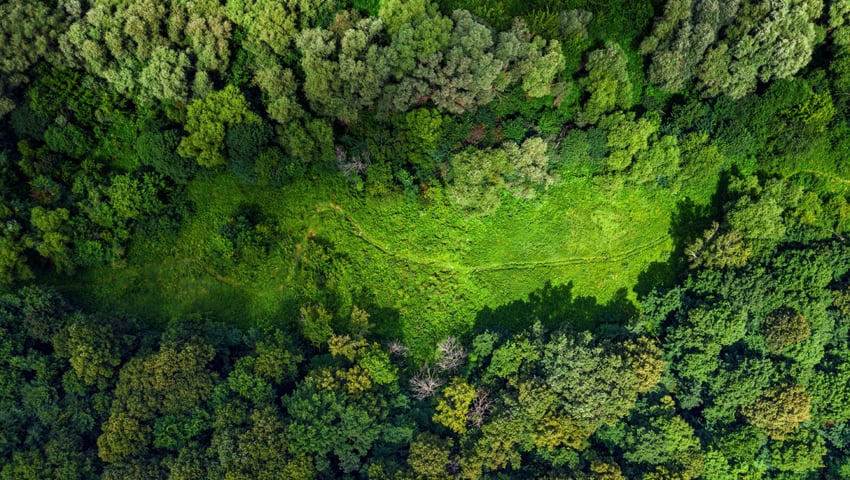Article by Robin Walter, researcher and contributing author for the Soil Association’s Regenerative Forestry Report
Regenerative forestry seeks to produce timber whilst restoring the forest to a functional ecology – especially with regard to carbon, biodiversity and people.
In 2022, I assisted the Soil Association set out its vision for UK forestry in its Regenerative Forestry Report, based on its extensive experience in forest certification, nature conservation and agro-ecological farming.
Against a background of escalating crises of climate and nature, the report focused on whether it is possible to manage UK forests, in particular the plantation resource established in the 20th century, to achieve a better carbon balance and to increase the abundance of nature, whilst ensuring strong livelihoods in productive forestry.
Plantation monoculture forestry was the answer to questions we were asking 100 years ago – how can we build a national strategic timber resource at speed? Sustainable Forest Management was the response to the changing mood of the 1990s and greater environmental concerns.
Today we have new questions, more urgent questions, and the issue of timber is ever more relevant. In the UK we still live in a massively deforested and increasingly depleted land. Sustaining the status quo will no longer suffice. We need to be actively restoring and regenerating our life support systems and our damaged relationship with nature.
Regenerative forestry meets today’s challenges and is complementary to regenerative agriculture, seeking to produce whilst improving the context within which it operates. It is not purely extractive, but seeks to restore the living world on which it depends, and on which we all depend.
Climate and carbon
So what does Regenerative forestry look like? With regard to climate and carbon, forest soils are the foundation of a healthy forest, in constant dynamic interaction, and the prime store of carbon. Soil disturbance should be minimised, especially on peaty and organo-mineral soils rich in carbon, with special attention to ground preparation, planting methods, and compaction and erosion during harvesting. We have known about mycorrhizae for decades, but we are only just beginning to appreciate the role played by mycorrhizal fungal networks in sustaining the health of the forest. New native broadleaved woodland is a good carbon sink over the long term and has biodiversity benefits. High-yielding conifers sequester carbon faster and have more limited biodiversity benefits. We need both. Harvested wood products, especially if they have long-term uses, make a significant contribution to the carbon balance of the forest.
Biodiversity
Our forests can be rich in biodiversity, and the evidence shows that this strengthens resilience to shocks of pest, disease and adverse weather events. But like our wider landscapes, our forests are also gradually losing their ecological richness, especially from lack of management and high levels of browsing by deer, also from recreational disturbance and nitrogen pollution. Maintaining forest conditions, by retaining continuous canopy cover and increasing diversity of tree species, age and structure, better supports the forest’s ecological processes.
People
We need forests for people. If we want to increase forest cover, then we need to create forests which appeal to people, which they welcome to their neighbourhoods, which they love to visit, and which also yield useful wood products, such as timber and fuel.
The British public love trees and forests but appear to have less love for – and understanding of – forestry practice.
Trees and forests inhabit the public realm, even when they are growing on private land. They are big, enduring, visible components of our shared space and as such we develop feelings of admiration, joy, familiarity, love for them.
It is these accumulated values, as well as the wildlife, which can be lost when forests are clear-felled. The sole focus on timber is perceived as a neglect of other values.
Key features of regenerative forestry practices:
- Is this stand or forest in a better condition than before?
- Is it locking up carbon in soils, trees and timber?
- Is it home to more nature?
- Is it supporting local people and livelihoods?
- Is it contributing to a diverse and ecologically functional landscape?
- Is it more resilient?
- Are we giving back more than we are taking?
- Can it continue to do all this for the foreseeable future?
